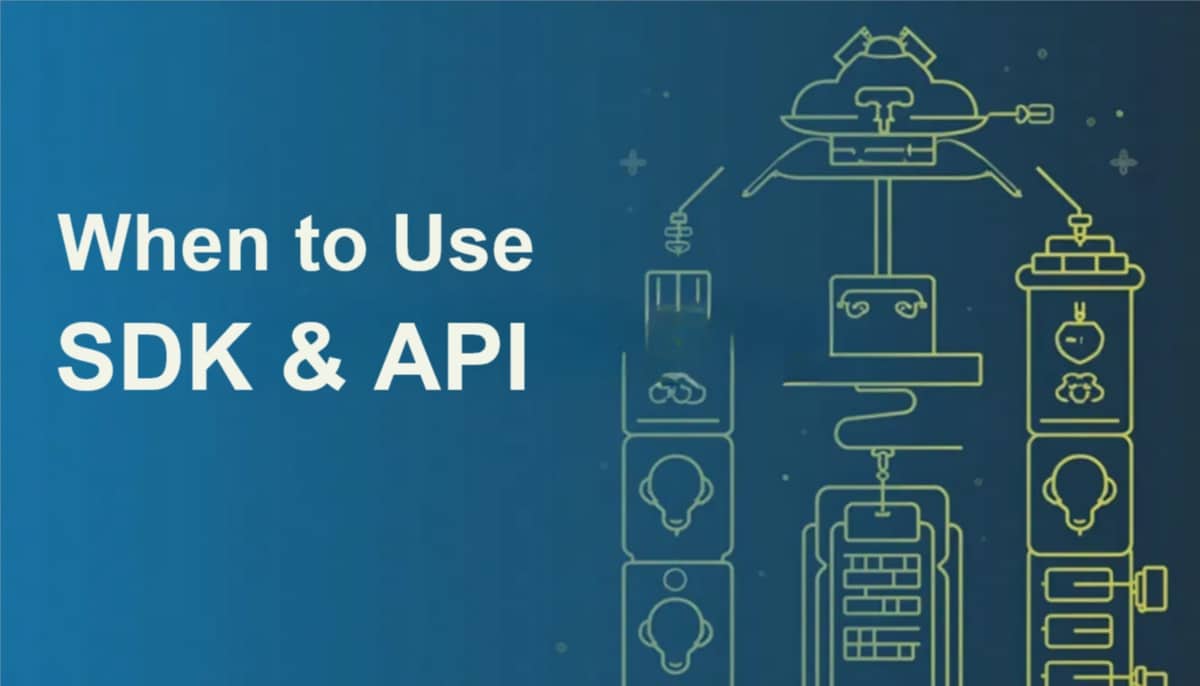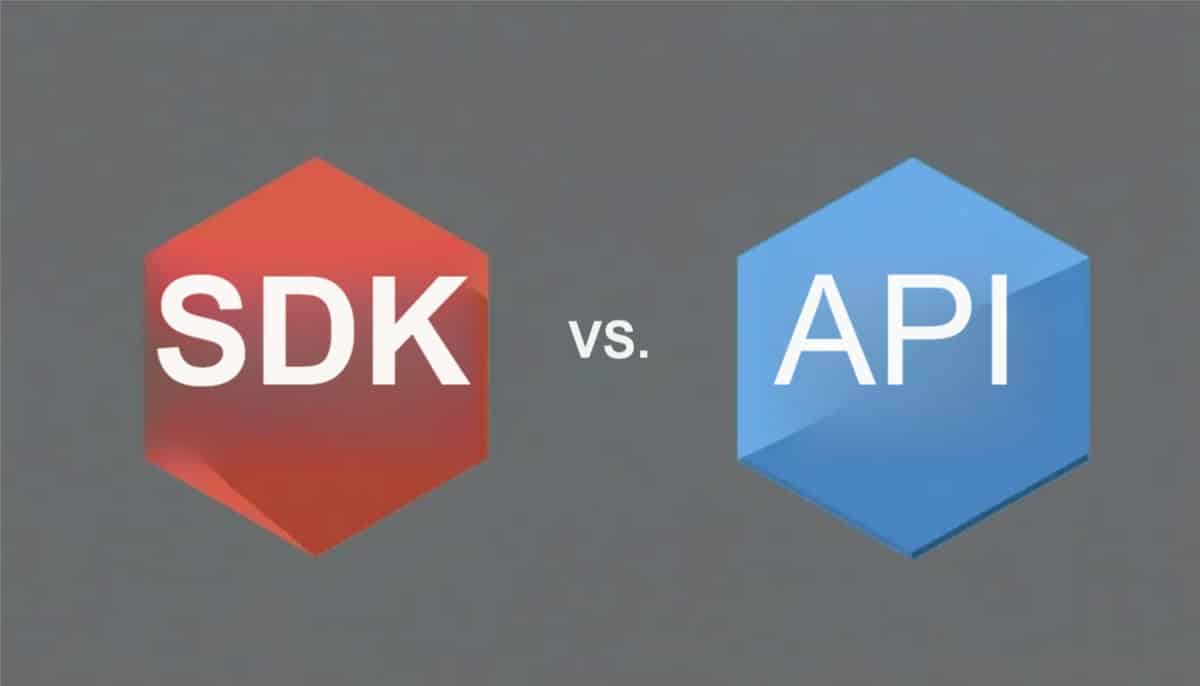In software development, you might hear SDK and API used interchangeably, but they mean two different things. The difference between SDK vs API is especially important for developers and anyone who is curious about how software is made. So, let’s learn more about them.
What is an API?
An API is a set of rules and protocols that allows different software applications to communicate with each other. Think of an API as a messenger that takes requests, tells a system what you want it to do, and then returns the response back to you. APIs enable software to share data and functionality without revealing the internal code or workings.
For instance, when you open a weather app on your phone, it could be using a weather API to request the latest forecast from a remote server. The app sends a request to the API and then receives the weather data in return. That way, the app doesn’t need to know how the weather data is gathered or processed; it just needs to know how to request it and how to interpret the response.
APIs are powerful and can be applied to a variety of domains, such as web services, OS, databases, and hardware. They make it simple and efficient for developers to embed a third-party service into their app.
What is an SDK?
An SDK is a complete set of tools, libraries, documentation, and sometimes sample code that helps developers build applications for a specific platform or purpose. It is like a toolbox that contains everything you need to create software without starting from scratch.
Let’s say you’re building a mobile application which will use maps. Rather than create all of the code to handle maps, locations, and navigation, you’ll use a Maps SDK provided by a company like Google. This SDK provides professional tools and components for development that make it easier and faster to add maps to your app.
APIs are part of what an SDK is, but an SDK includes things beyond that, like compilers, debuggers, and frameworks. They are typically platform-dependent, so there would be separate SDKs for Android, iOS, or web development.
Key Differences Between API and SDK
| Aspect | API | SDK |
| Definition | A set of rules for software communication | A full toolkit for building software |
| Purpose | Enables software to interact and share data | Provides tools to create applications |
| Components | Interface, protocols | APIs, libraries, tools, documentation |
| Scope | Focused on communication | Comprehensive development environment |
| Size | Lightweight, minimal installation | Larger, requires installation and setup |
| Platform Specificity | Usually platform-independent | Often platform-specific |
| Usage Example | Accessing payment gateway API | Using Android SDK to build mobile apps |
Some Examples to Explain the Difference
API Example
Let’s say you’re building a website and you want to add payments to it. You have the option of processing payments using the Stripe API. You make requests, in calls made to Stripe’s API, to either create a charge, process a refund, or check the status of a transaction. This way, you only write code to interact with the API; you don’t have to think in detail about how Stripe actually makes the payments work behind the scenes.
SDK Example
If you’re developing an app for an Android device, utilize the Android SDK. This SDK includes everything you need to build, test, and debug your app, including APIs to connect with device features such as the camera or GPS, tools to compile your code, and emulators to test your app on various devices.
SDK vs API: When to Use What

Based on your project requirements, you’ll decide between an API and an SDK:
- Use an SDK if you need a comprehensive set of tools for building an application or adding a feature from scratch, as it includes platform-specific functionality. SDKs are time-saving; they provide prebuilt parts and reduce complexity.
- Whenever you want supplemental features or data that you could add to the current application but without a full development environment, you should do so via an API. APIs are perfect for you if you want to incorporate third-party services such as social media sharing, payment gateways, or data feeds.
Sometimes, you will use both. For instance, you might use an SDK to build your app and then call APIs from external sources to pull in data or to add services.
Final Thoughts
I believe the distinction between API and SDK makes it easier to decide which would be a better approach to development. SDKs are best when developers need to accelerate their delivery of more complex features with less hassle. But, on the other hand, the APIs provide greater freedom and controls to better integrate specific functions.
SDKs are amazing for getting started with or for teams that want to prototype, test out, or even launch products, because there are native tools and documentation already available. But if you need to customize your app or integrate multiple services, the APIs give you the tools to build that.
Also, it’s useful to consider the analogies that are often used: APIs tell you how to get certain ingredients, while SDKs are the full kitchen, with all the utensils and resources to prepare the meal. Which one you end up using will depend on how much you like to cook, how good you are at it, and what you want to achieve.
Discover how plugins can revolutionize your app development experience. Also, to share your experience about using APIs and SDKs, head to our social pages on Facebook, X (Twitter), or LinkedIn.
Sources:
- www.getstream.io/glossary/api-vs-sdk/
- www.blog.hubspot.com/website/sdk-vs-api
- www.aws.amazon.com/compare/the-difference-between-sdk-and-api/
- www.document360.com/blog/documentation-approach-sdk-vs-api/
All images are AI-generated



How to Turn Your Blog Into a Money-Making Machine (Even If You’re Just Starting)
How to Set Role-Based Pricing in WooCommerce (Wholesale & Retail)